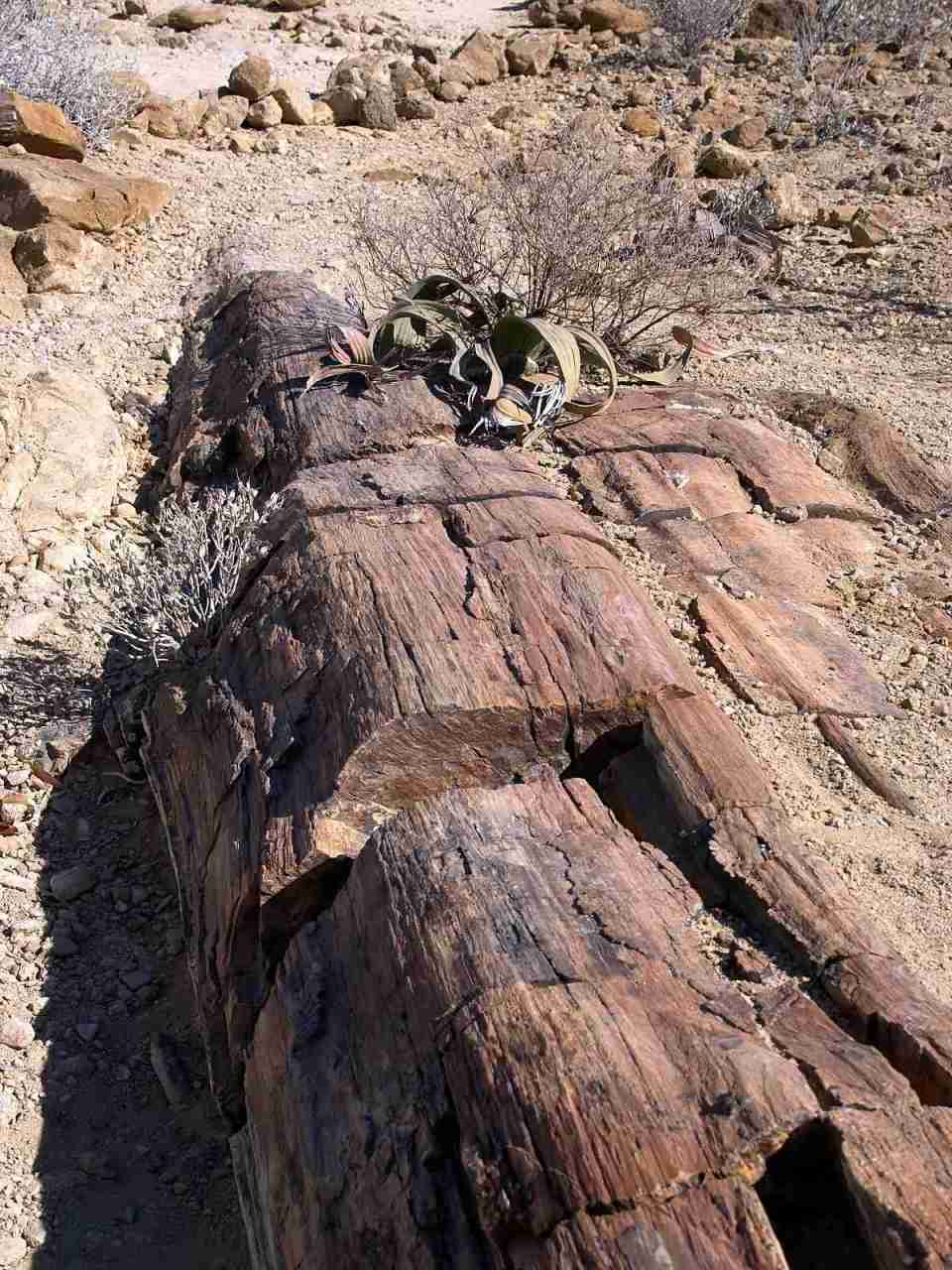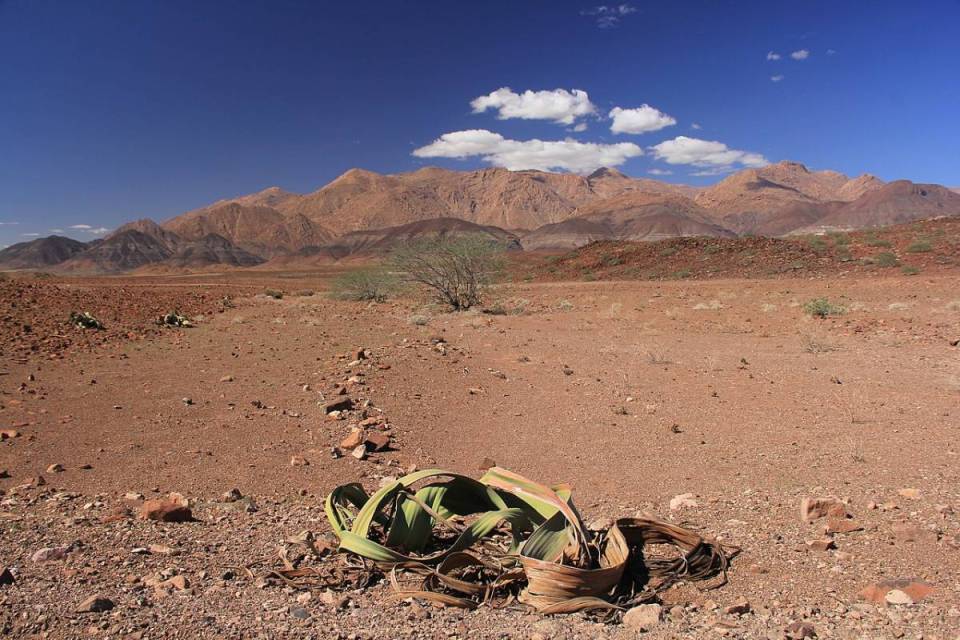The plant that defies the passage of time.

The largest known Welwitschia, nicknamed “The Big Welwitschia”, stands 1.4 m (4.6 ft) tall and is over 4 m (13 ft) in diameter. Its estimated age is 1,500 years. Photo: Thomas Schoch
In the heart of the unforgiving Namib Desert, where rainfall is scarce and temperatures soar, a remarkable plant clings to life, defying the harsh conditions that would crush most lifeforms. This botanical marvel is Welwitschia mirabilis, a living fossil that has captivated scientists and enthusiasts for centuries.
Welwitschia mirabilis is unlike any other plant in the world. It has only two strap-like leaves that grow continuously from a woody base, reaching lengths of up to to 4 m (13 ft). The leaves, adorned with a mosaic of scars from the oldest sections that have died and fallen off, give the plant a distinctive appearance, earning it the nickname “two-leaved wonder.”
Genetic studies have revealed that Welwitschia mirabilis is an very ancient species which evolved around the same time as the dinosaurs, around 200 million years ago. This puts it at the same evolutionary level as some of the earliest conifers, making it a living link to a long-lost era of plant life.

Petrified tree trunk and Welwitschia in Namibia. Welwitschia was probably already around when this tree was still alive. Photo: Hans Hillewaert
The Namib Desert, a vast expanse of sand dunes and rocky plains stretching along the coast of southwestern Africa, is one of the driest places on Earth, receiving an average annual rainfall of less than 2 inches. To survive in this harsh environment, Welwitschia mirabilis has evolved remarkable adaptations.
Its roots extend deep into the sandy soil in search of any available moisture. The leaves are covered in a thick, waxy coating that helps to prevent water loss. And the plant is able to absorb water from fog that rolls in from the coast, thanks to its hairy leaves that trap droplets of water.

Brandberg Mountain in the northwestern Namib Desert, with Welwitschia mirabilis in the foreground. Photo: Erongoguy
Welwitschia mirabilis is renowned for its remarkable longevity. Some specimens have been estimated to be over 2,000 years old, making them some of the oldest living organisms on Earth. Their slow growth rate, with an average of only 1-2 inches of leaf growth per year, contributes to their extended lifespan. Plant age is determined through radiocarbon dating due to the absence of annual rings in the species.
The plant reproduces by producing cones that contain seeds. The cones open when they are wet, releasing the seeds onto the ground. However, the conditions in the Namib Desert are not conducive to germination, and it is estimated that only one in a million seeds will successfully sprout.

Welwitschia flowers. They have been booming for over 200 million years. Photo: Cole Shatto
Due to habitat loss and collecting pressures, Welwitschia mirabilis is classified as a vulnerable species. Conservation efforts are underway to protect the plant’s remaining populations and ensure its continued survival for generations to come.
Visitors to the Namib Desert have the opportunity to admire the Welwitschia plant firsthand. Some of the best places to see this remarkable plant include the Welwitschia Plains and the Skeleton Coast National Park.

A Welwitschia in the petrified forest of Khorixas. Photo: Nanosanchez
Welwitschia mirabilis is a symbol of resilience and the ability of life to persevere in the face of adversity. It serves as a reminder that even in the driest and most unforgiving environments, life finds a way to thrive.





